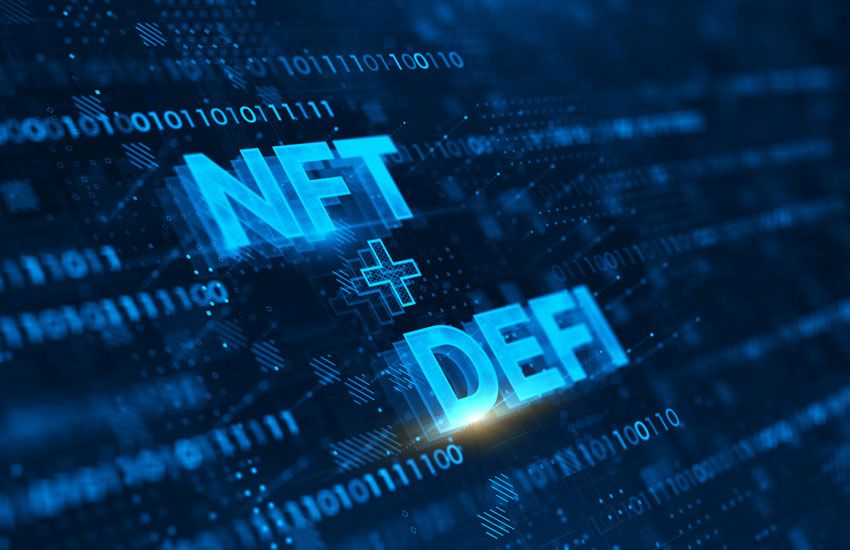The rapid evolution of blockchain technology has given rise to a new wave of digital assets, with Non-Fungible Tokens (NFTs) and Decentralized Finance (DeFi) leading the charge. While both concepts operate within the same blockchain ecosystem, they cater to distinct needs and functionalities. However, the intersection of DeFi NFTs is where the real innovation lies. This article will explore the fundamentals of NFTs and DeFi, delineate their differences, and highlight how they converge to create exciting applications and future opportunities.
Get to Know NFTs and DeFi
What are NFTs?
Non-Fungible Tokens (NFTs) are unique digital assets that represent ownership or proof of authenticity of a specific item or piece of content on a blockchain. Unlike cryptocurrencies like Bitcoin or Ethereum, which are fungible and can be exchanged on a one-to-one basis, NFTs are distinct and cannot be replicated. Each NFT has unique metadata, such as a title, creator, and transaction history, that distinguishes it from other tokens.
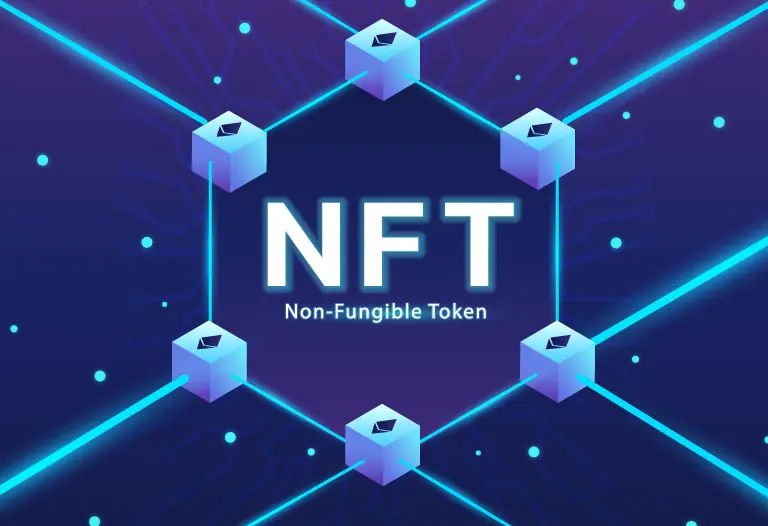
NFTs have found applications in various domains, including:
- Digital Art: Artists can tokenize their work, creating a unique digital collectible that can be sold or auctioned. The ownership is recorded on the blockchain, ensuring authenticity and provenance.
- Collectibles: Platforms like NBA Top Shot allow fans to buy, sell, and trade officially licensed digital highlights as NFTs, creating a new market for sports memorabilia.
- Music and Entertainment: Musicians and filmmakers can tokenize their work, offering fans exclusive access to content, early releases, or unique experiences.
- Virtual Real Estate: Platforms like Decentraland and The Sandbox allow users to buy, sell, and develop virtual land and assets, all represented as NFTs.
What is DeFi?
Decentralized Finance (DeFi) refers to a system of financial applications built on blockchain technology that aims to recreate and enhance traditional financial services without intermediaries. DeFi protocols allow users to lend, borrow, trade, and earn interest on their digital assets in a secure and transparent manner. Key components of DeFi include:
- Smart Contracts: Self-executing contracts with the terms of the agreement directly written into code, enabling trustless transactions without intermediaries.
- Liquidity Pools: Pools of tokens locked in smart contracts that facilitate trading on decentralized exchanges (DEXs) and provide liquidity for users.
- Decentralized Exchanges (DEXs): Platforms that allow users to trade cryptocurrencies directly with one another without the need for a centralized authority.
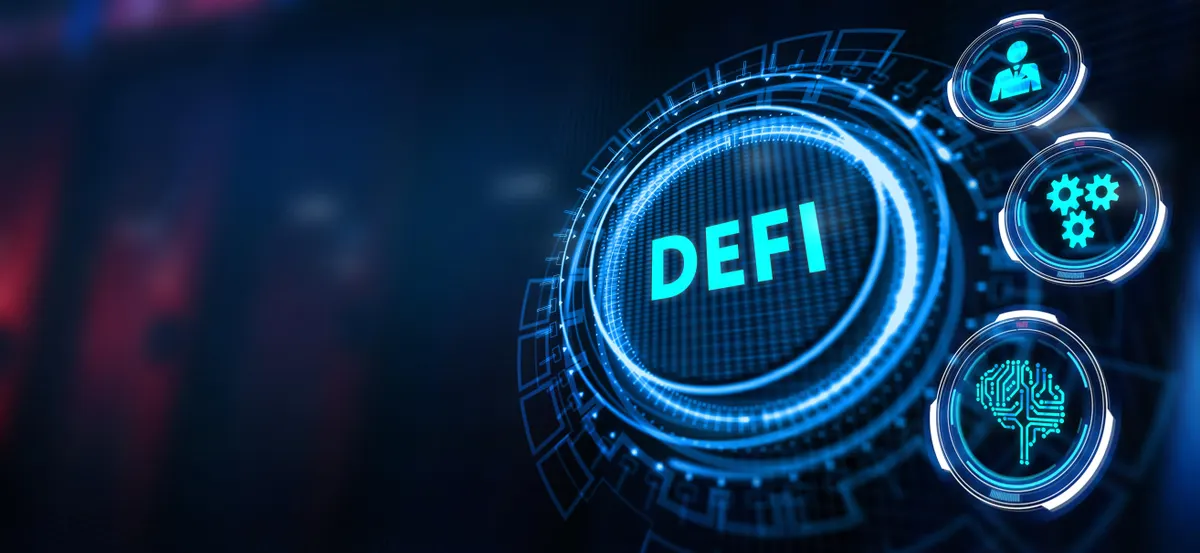
The DeFi ecosystem is expanding rapidly, providing innovative financial solutions that challenge the traditional banking system.
The Difference Between NFTs and DeFi
While both NFTs and DeFi operate on blockchain networks, their purposes and functionalities differ significantly:
- Nature of Assets: NFTs are unique digital assets, while DeFi encompasses a variety of fungible tokens and financial instruments. NFTs represent ownership of specific items, whereas DeFi tokens can often be exchanged for one another on a one-to-one basis.
- Use Cases: NFTs are primarily used for ownership and authenticity verification of digital items, while DeFi focuses on providing financial services such as lending, borrowing, trading, and yield farming.
- Intermediaries: NFTs often require platforms for creation and trading (like OpenSea or Rarible), while DeFi operates in a more peer-to-peer manner without traditional intermediaries.
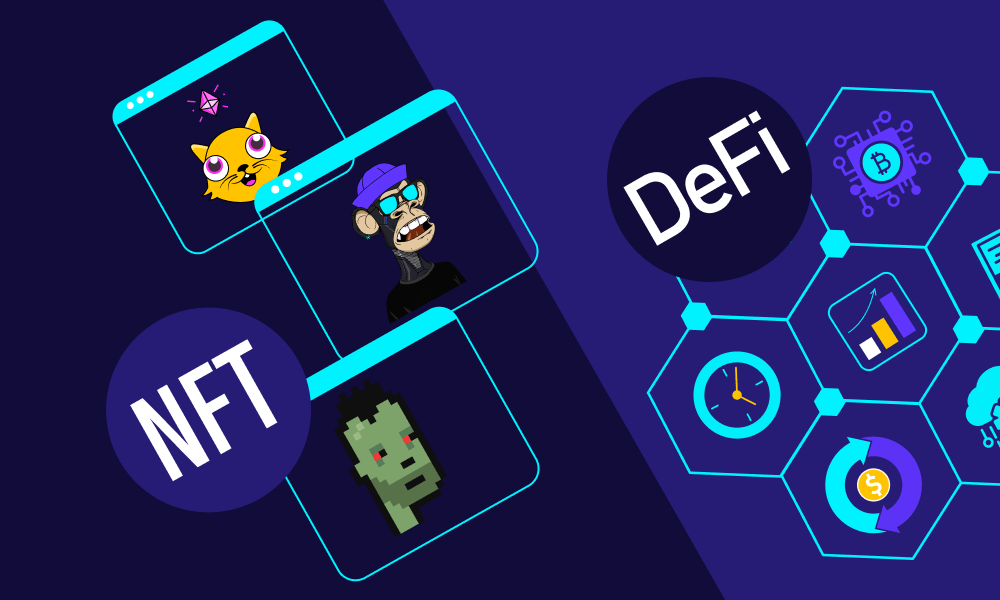
Understanding these differences is crucial for grasping how NFTs can be leveraged within the DeFi ecosystem.
How Are NFTs Used in DeFi?
The integration of NFTs into the DeFi landscape has opened up numerous possibilities. Here are several key ways in which NFTs are utilized within DeFi:
1. Collateralization
One of the most significant applications of NFTs in DeFi is their use as collateral for loans. Platforms like NFTfi and Arcade allow users to leverage their NFTs to secure loans. Borrowers can use their unique digital assets to access liquidity without needing to sell them. This functionality benefits both borrowers, who can retain ownership of their NFTs, and lenders, who gain access to potentially lucrative assets.
For instance, if a user owns a high-value NFT, they can deposit it into a lending platform and receive a loan in cryptocurrency. If they repay the loan plus interest, they reclaim their NFT. This model not only provides liquidity for NFT owners but also allows lenders to assess the value of the collateralized assets.
2. Fractional Ownership
NFTs can be fractionalized, allowing multiple investors to own a share of a high-value asset. This approach democratizes access to expensive NFTs and makes it easier for people to invest in digital collectibles without needing significant capital. DeFi platforms facilitate this by creating fungible tokens representing fractional ownership, which can be traded or used in other DeFi applications.
For example, a rare digital artwork could be divided into 1,000 fractions, each represented by a fungible token. This allows smaller investors to participate in the ownership and potential appreciation of the asset without needing to purchase the entire piece.
3. Yield Farming
Yield farming has become a popular strategy in DeFi, where users provide liquidity to protocols in exchange for rewards. NFTs can play a role in yield farming, allowing users to stake their NFTs to earn additional tokens. Some DeFi protocols have introduced mechanisms to incentivize NFT holders to provide liquidity or participate in governance by rewarding them with additional tokens or a share of the platform’s revenue.

For instance, a DeFi project may allow users to stake their NFT collectibles in return for governance tokens or other incentives. This integration creates a symbiotic relationship between NFTs and DeFi, enhancing the utility of both assets.
4. Insurance
The insurance industry within DeFi is evolving, and NFTs can provide unique opportunities in this space. NFTs can represent insured assets or specific policy terms, creating transparent and verifiable insurance contracts. This integration could streamline claims processes and enhance trust between insurers and policyholders.
For example, a decentralized insurance platform could issue NFTs to represent coverage for specific digital assets, such as NFTs themselves. In the event of theft or loss, policyholders could claim compensation based on the terms outlined in the NFT-based policy.
5. Gamification and Play-to-Earn Models
The gaming industry is increasingly incorporating NFTs, with play-to-earn models gaining traction. In these ecosystems, players can earn NFTs through gameplay, which can then be used within DeFi applications for lending, borrowing, or staking. This synergy creates an engaging user experience and a vibrant economy surrounding digital assets.
Platforms like Axie Infinity and Gods Unchained exemplify this trend, allowing players to earn unique in-game assets represented as NFTs. These assets can be traded on secondary markets or utilized in DeFi applications to earn additional rewards.
Applications of DeFi NFTs
The intersection of NFTs and DeFi has birthed several innovative applications that demonstrate the versatility and potential of this convergence. Here are some notable examples:
1. NFT Marketplaces with DeFi Features
Marketplaces like Rarible and Foundation are exploring DeFi features by integrating token staking and lending functionalities. Users can stake their NFTs to earn rewards, participate in governance, or access exclusive offers. This blend of DeFi and NFT marketplaces enhances user engagement and provides additional value for digital asset holders.
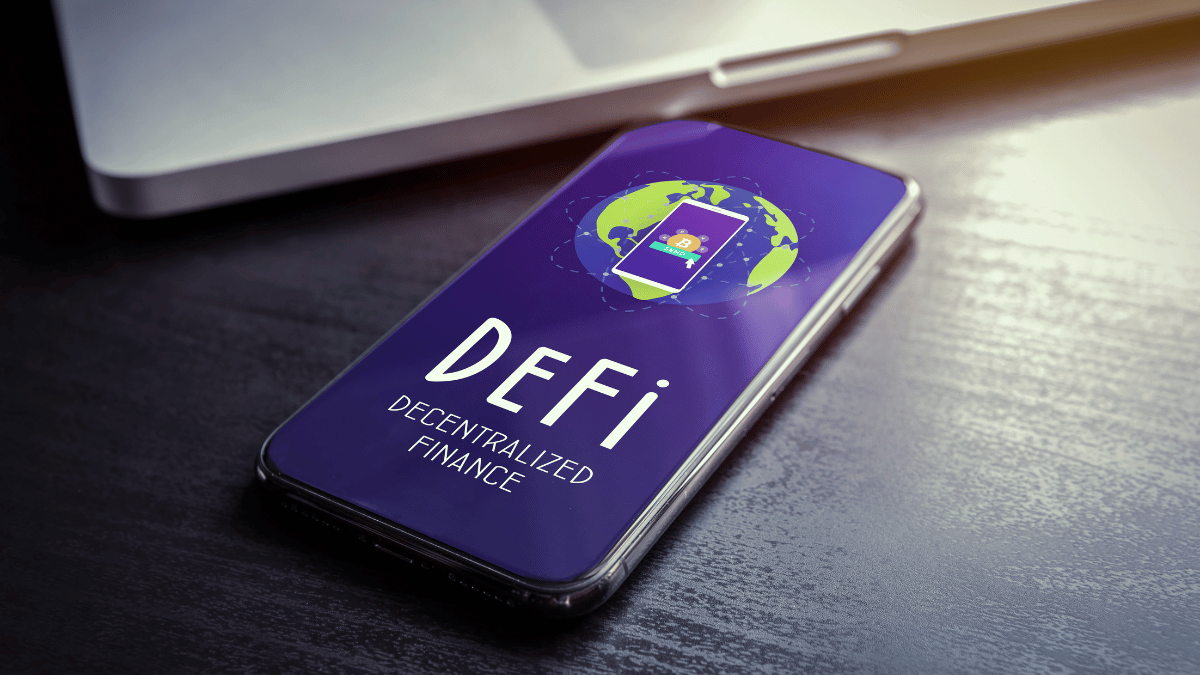
For example, a marketplace might allow users to stake their NFTs to receive a share of transaction fees generated on the platform, incentivizing long-term holding and participation.
2. Decentralized Autonomous Organizations (DAOs)
Decentralized Autonomous Organizations (DAOs) are organizations governed by smart contracts on the blockchain. NFTs can serve as membership tokens, granting holders voting rights and influence over decisions within the DAO. This approach aligns the interests of NFT holders with the governance of the project, creating a community-driven ecosystem.
For instance, a DAO focused on digital art could issue NFTs that represent voting power in selecting featured artists or determining how funds are allocated. This integration empowers the community and fosters a sense of ownership among participants.
3. NFT-Based Lending Protocols
Platforms like Nexo and Arcade allow users to secure loans using their NFTs as collateral. These protocols assess the value of the NFT and provide liquidity based on its market worth. This innovative use of NFTs expands the lending landscape, enabling users to unlock capital while maintaining ownership of their digital assets.
For example, a user with a valuable NFT can deposit it on a lending platform, receiving a loan that they can use for other investments. This allows users to take advantage of market opportunities without selling their prized digital collectibles.
4. NFT Staking
Staking NFTs can generate passive income for holders. Some platforms allow users to stake their NFTs in exchange for native tokens, providing a new revenue stream. This application encourages users to hold their NFTs long-term while participating in the DeFi ecosystem.
For instance, an NFT platform may reward users with its native tokens for staking certain collectible NFTs, creating a financial incentive to hold onto those assets rather than selling them.

5. Insurance for NFT Assets
As the NFT market grows, so does the need for insurance. Platforms like Nsure and Etherisc are emerging that offer coverage for NFTs, protecting users against loss or theft. By integrating insurance into DeFi frameworks, these platforms provide a safety net for digital asset owners.
For example, a user who owns a valuable NFT can purchase insurance coverage through a DeFi platform, ensuring that they are compensated in the event of loss or theft. This service adds an extra layer of security and peace of mind for NFT holders.
Future Prospects of NFTs and DeFi
The future of NFTs and DeFi is promising, with several trends indicating continued growth and innovation:
1. Increased Interoperability
As blockchain technology matures, the interoperability of different platforms will enhance the functionality of NFTs and DeFi. Cross-chain solutions will allow users to leverage assets across various blockchains, creating a more seamless experience in trading and using NFTs in DeFi applications.
For instance, users may soon be able to trade NFTs from one blockchain on another seamlessly, increasing liquidity and access to diverse digital assets.
2. Enhanced Regulation and Compliance
As both NFTs and DeFi gain popularity, regulatory scrutiny will likely increase. The establishment of clear regulations will foster trust and stability in the market, encouraging wider adoption among users and investors. Compliance measures will be necessary to ensure that DeFi protocols and NFT marketplaces operate within legal frameworks.
For example, regulatory bodies may develop guidelines for NFT marketplaces and DeFi lending platforms, ensuring consumer protection and reducing fraudulent activities.
3. Expansion of Use Cases
The integration of NFTs into various sectors, including art, gaming, music, and real estate, will continue to grow. As more industries recognize the value of NFTs and DeFi, innovative use cases will emerge, enhancing the utility and appeal of both concepts.
For instance, real estate companies may begin tokenizing properties as NFTs, allowing fractional ownership and easier transactions while leveraging DeFi for financing.
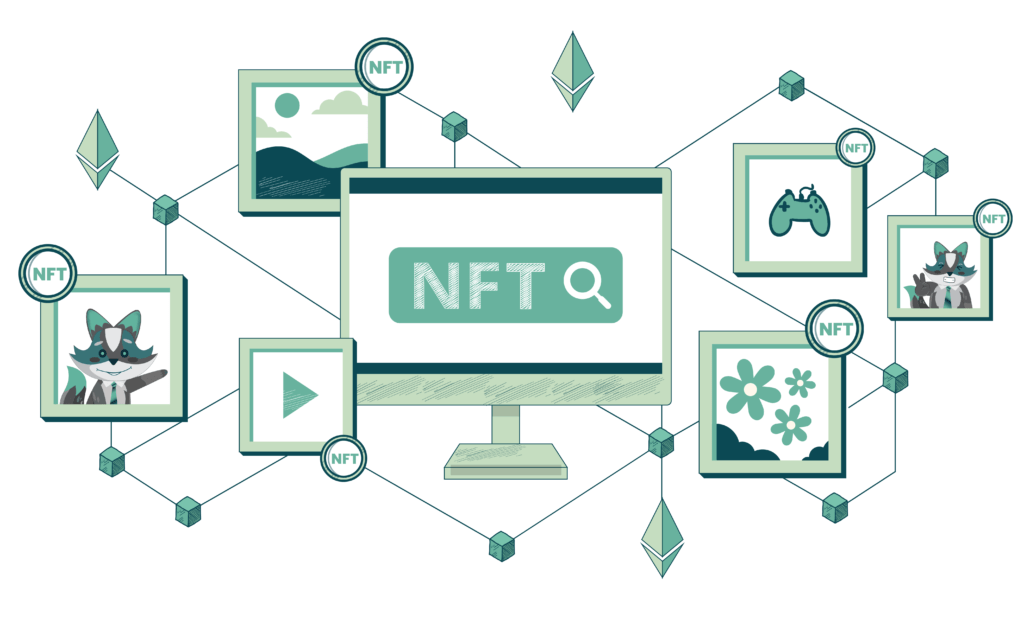
4. Enhanced User Experience
User experience will be a key focus area for developers. As more people enter the NFT and DeFi spaces, platforms will need to prioritize simplicity and accessibility. Intuitive interfaces and educational resources will help onboard new users and foster a more inclusive environment.
For example, platforms may offer user-friendly dashboards that simplify complex DeFi functionalities, making it easier for individuals to manage their assets and investments.
5. Sustainable Models
As the NFT and DeFi markets evolve, there will be a growing emphasis on sustainability. Environmental concerns associated with blockchain technology will drive innovation toward more energy-efficient protocols. Projects that prioritize sustainability will likely attract socially conscious investors and users.
For instance, Ethereum’s transition to proof-of-stake (PoS) is a significant step toward reducing the environmental impact of blockchain transactions, benefiting both NFTs and DeFi applications.
Conclusion
The fusion of DeFi and NFTs represents a groundbreaking shift in the digital asset landscape. As these technologies continue to evolve, they offer unique opportunities for innovation, investment, and engagement. Understanding the nuances of NFTs and DeFi, as well as their interconnections, is crucial for navigating this dynamic space.
As we look ahead, the prospects for DeFi NFTs are bright, with the potential to reshape industries and redefine how we interact with digital assets. The ongoing development of applications, platforms, and use cases will pave the way for a more interconnected and vibrant ecosystem that benefits creators, investors, and users alike. In this exciting new world, the possibilities are limited only by our imagination, making it a thrilling time to be involved in the convergence of DeFi and NFTs.
Read more: THE POTENTIAL OF NFT SMART CONTRACTS

